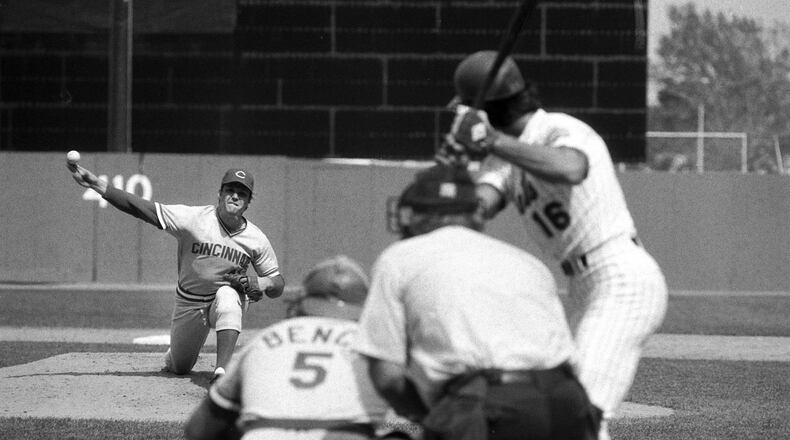There were not many battles Seaver couldn’t win, but this week he lost his long-time struggle with dementia, accentuated by COVID-19.
His baseball legacy is impeccable. He won three Cy Young Awards, led the National League in strikeouts five times, struck out 10 consecutive San Diego Padres en route to a 19-strikeout game.
He was a New York icon, as recognizable in Manhattan as the upraised arm of The Statue of Liberty. But Seaver had a better arm.
One of the most unexpected occurrences in baseball history was enacted on June 15, 1977. Who would trade one of the greatest pitchers in the game, especially in his totally dominating prime?
The New York Mets would. Seaver and Mets chairman M. Donald Grant were embroiled in a long-standing feud.
Grant traded him to the Cincinnati Reds and Seaver was in tears during his pre-departure press conference.
The first thing that happened when Seaver reported to the Reds was that Cincinnati icon, Joe Nuxhall, gave up his uniform number, 41, which he wore while pitching batting practice, to Seaver, who always wore 41.
Seaver won 311 games during his 20-year Hall of Fame career. He spent six of those years in Cincinnati and was 75-48.
In all his years with the Mets, he had not pitched a no-hitter. Three times he took no-hitters into the ninth inning and three times he pitched a one-hitter.
That changed while he was wearing the red cap of the Cincinnati Reds on June 16, 1978 — exactly a year-and-a-day after his trade to the Reds.
Seaver had won six straight games when he took the mound that day to face the last place St. Louis Cardinals
His good friend, catcher Johnny Bench, was out of the lineup with an ailing back and back-up catcher Don Werner was behind the plate.
“Seaver ran the show, called his own game,” said Werner. “I was just a spectator.” And he watched Seaver pitch his one-and-only no-hitter, a 4-0 victory just over two hours at Riverfront Stadium.
He and opposing pitcher John Denny, later a pitcher for the Reds, pitched no-hitters for four innings, but the Reds broke through and Seaver survived three walks, including one to open the ninth inning.
“If you pitch long enough with good enough stuff you are bound to pitch a no-hitter sooner or later.” he said after accomplishing it during his 396th career start.
Upon his arrival in Cincinnati, Seaver quickly became the pitcing guru in the clubhouse, looked upon with the deepest respect by the young pitchers, Frank Pastore in particular.
Pastore was in awe of Seaver, idolized him, and tried to make himself over in Seaver’s image. He copied his wind-up, his delivery, right down to the way Seaver dipped low and dragged his knee on the ground during his delivery. And he spent more time at Seaver’s locker than Seaver did.
But Pastore was not Seaver. He was a carbon copy look-alike on the mound without the matching talent. And he struggled.
Finally, manager John McNamara told him, “You are not Tom Seaver. You can’t do what he does. Be yourself.”
Nobody could be Tom Seaver and few could do what he did.
In addition to his massive talent, Seaver was a highly intelligent man with a warped sense of humor.
Former writer Joe Minster of the Hamilton Journal-News always wore a suit and tie to cover games, long after it was no longer fashionable.
One day, as Minster conducted an interview, Seaver picked up a pair of scissors and snipped off Minster’s tie just below the knot. He permitted Minster to stew a couple of days, then presented him with three new silk ties.
Bench was not behind the plate the night Seaver pitched his no-hitter. But every year during Hall of Fame festivities in Cooperstown, Seaver and Bench were inseparable. Seaver’s infectious laughter could be heard across every room in which the pair inhabited.
That laughter is silenced now. But the echoes of that cackling giggle won’t be forgotten by anybody who ever heard it, even if just once.
And anybody who ever saw him work his magic on the mound, won’t forget the perfect mechanics, the knee-dragging delivery and the frustration of the guy standing in the batter’s box.
Hal McCoy has covered the Reds since 1973 and was inducted into the Baseball Hall of Fame in 2002.
About the Author
